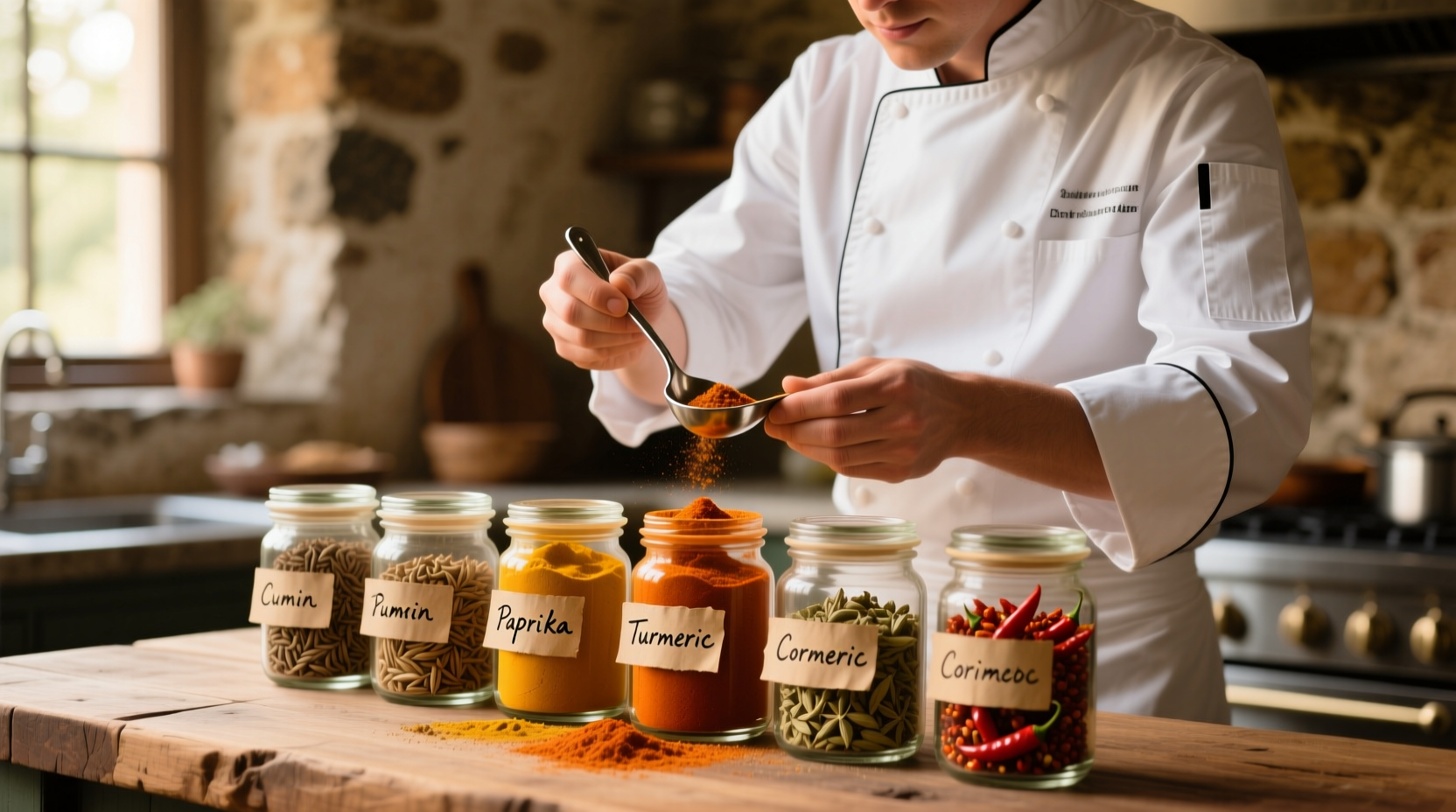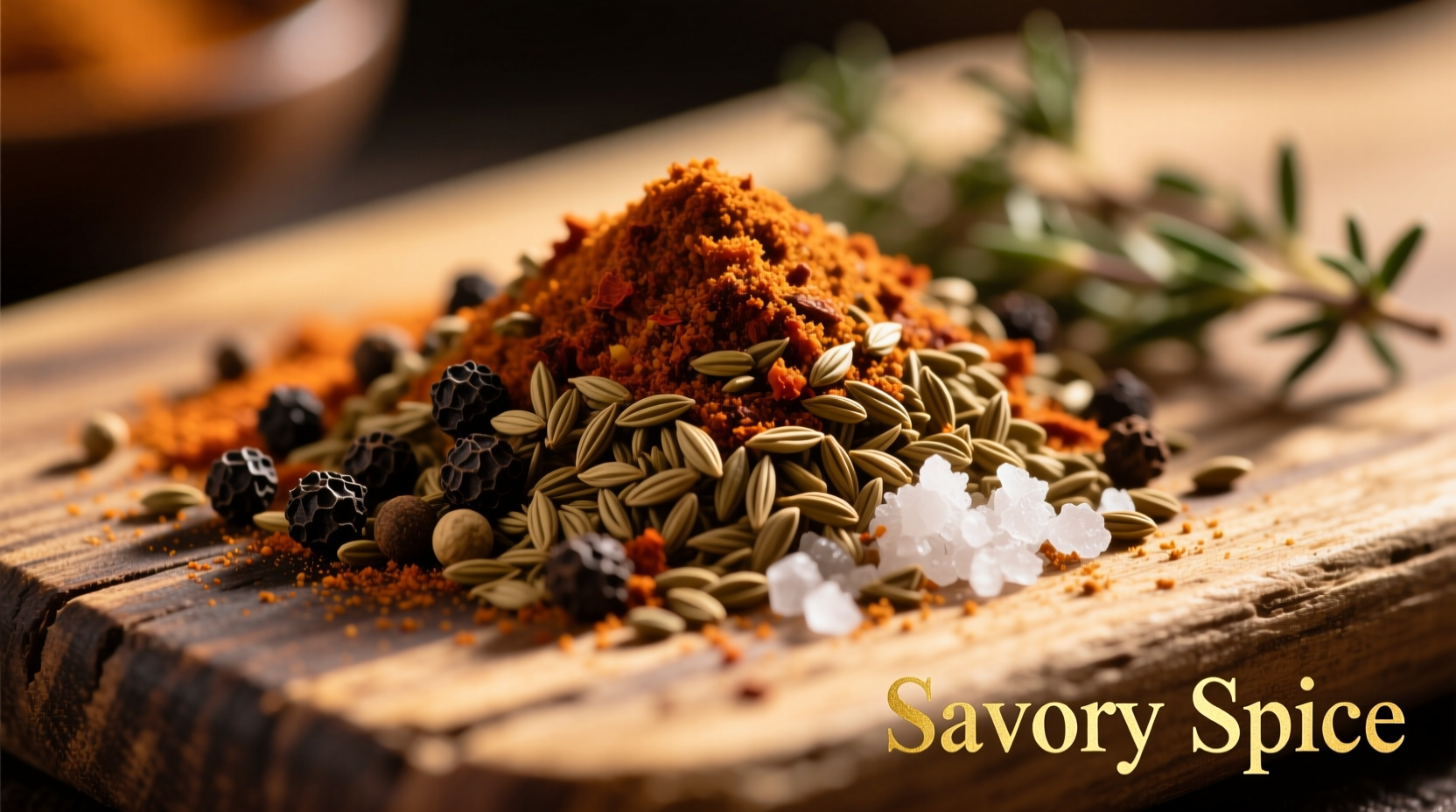The Science Behind Savory Flavor Profiles
Understanding what makes a spice "savory" requires exploring flavor chemistry. Savory spices primarily activate咸味 and umami receptors on your tongue, creating that satisfying "mouthfeel" associated with hearty dishes. According to research from the Monell Chemical Senses Center, compounds like piperine in black pepper and thymol in thyme interact with TRPV1 receptors, enhancing咸味 perception without adding salt.
Unlike sweet spices that contain vanilloids targeting sweetness receptors, savory varieties work through different biochemical pathways. This explains why adding cumin to chili creates depth while cinnamon would fundamentally alter the dish's character. The key distinction lies in how these spices complement咸味 ingredients rather than competing with them.
Savory vs. Sweet Spices: Clear Differentiation
| Characteristic | Savory Spices | Sweet Spices |
|---|---|---|
| Primary Flavor Target | 咸味 and umami receptors | Sweetness receptors |
| Common Chemical Compounds | Piperine, thymol, allicin | Vanillin, eugenol, cinnamaldehyde |
| Typical Culinary Applications | Meats, stews, roasted vegetables | Baked goods, desserts, sweet beverages |
| Heat Interaction | Flavor intensifies with cooking | Flavor diminishes with prolonged heat |
Essential Savory Spices Every Cook Should Know
Building your savory spice knowledge starts with understanding foundational varieties. Black pepper remains the most universally used savory spice globally, with Food and Agriculture Organization data showing 470,000 metric tons consumed annually. Its piperine content enhances咸味 perception while adding subtle heat.
Cumin stands out for its earthy warmth that transforms bean dishes and meat rubs. University of California research confirms cumin's thymoquinone compound significantly boosts flavor complexity in咸味 applications. Garlic powder provides consistent savory depth without raw garlic's sharpness, making it ideal for spice blends.
Professional chefs note that proper storage dramatically affects savory spice potency. The National Center for Home Food Preservation recommends keeping whole spices in airtight containers away from light, maintaining peak flavor for 1-2 years compared to 6-12 months for ground varieties.

Contextual Application: When to Use Which Savory Spices
Savory spices aren't interchangeable—their application depends on specific cooking contexts. Understanding these boundaries prevents common flavor mistakes:
- High-heat cooking: Whole peppercorns and coriander seeds withstand roasting better than ground versions
- Slow-cooked dishes: Bay leaves and thyme improve with prolonged simmering, releasing complex compounds gradually
- Dry rubs: Coarsely ground cumin and smoked paprika create texture while flavoring meat surfaces
- Finishing touches: Delicate savory spices like sumac should be added at the end to preserve volatile compounds
Food science research from the Culinary Institute of America reveals that adding savory spices at different cooking stages creates layered flavor profiles. For instance, blooming cumin in oil before adding liquids releases fat-soluble compounds that wouldn't extract in water-based cooking.
Global Savory Spice Traditions
Savory spice usage varies dramatically across culinary traditions. In Mediterranean cooking, oregano and rosemary create herbaceous depth, while Asian cuisines rely on five-spice powder's balanced咸味 profile. Mexican cuisine showcases cumin's earthiness in mole sauces, and Indian cooking features complex blends like garam masala where cardamom and cloves provide savory warmth without sweetness.
Chef Antonio Rodriguez explains: "The misconception that European cooking lacks savory spices ignores centuries of tradition. Medieval European cookbooks featured extensive savory blends using grains of paradise and long pepper—ingredients later overshadowed by New World imports." This historical context helps modern cooks appreciate savory spice diversity beyond basic supermarket offerings.
Practical Savory Spice Tips for Home Cooks
Maximize your savory spice potential with these professional techniques:
- Dry toast whole spices in a 350°F oven for 3-5 minutes before grinding to intensify flavors
- Create custom blends by combining 2 parts paprika, 1 part garlic powder, and ½ part cayenne for versatile seasoning
- Bloom spices in fat before adding liquids to extract maximum flavor compounds
- Store in dark glass containers to preserve volatile oils that degrade in plastic
Remember that freshness dramatically impacts results—stale savory spices lose up to 75% of their volatile compounds within six months of grinding, according to Journal of Food Science research. For best results, buy whole spices and grind as needed using a dedicated coffee grinder.











 浙公网安备
33010002000092号
浙公网安备
33010002000092号 浙B2-20120091-4
浙B2-20120091-4